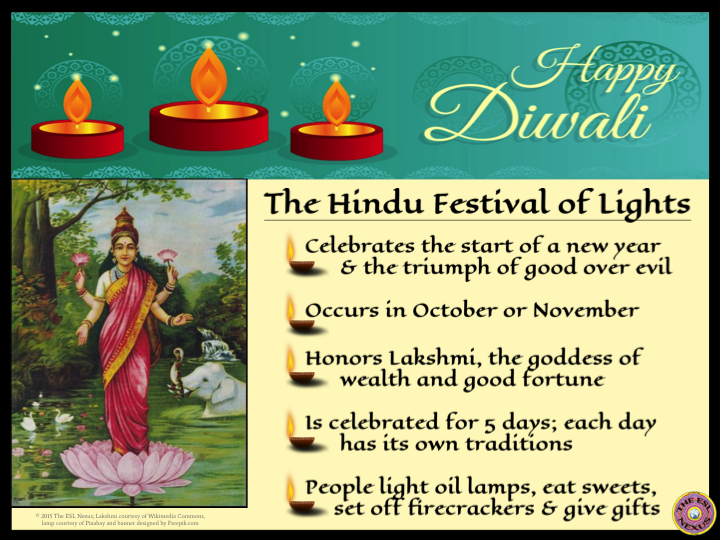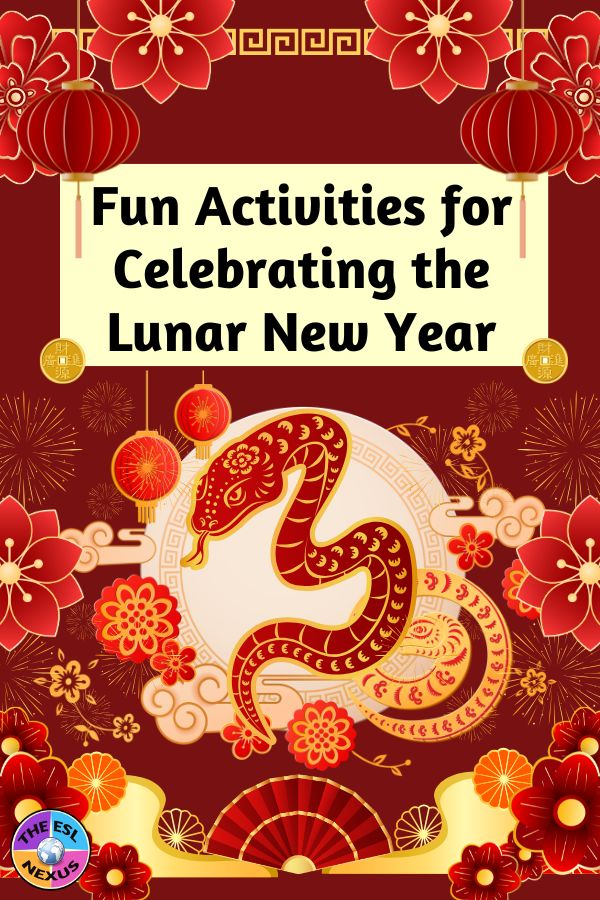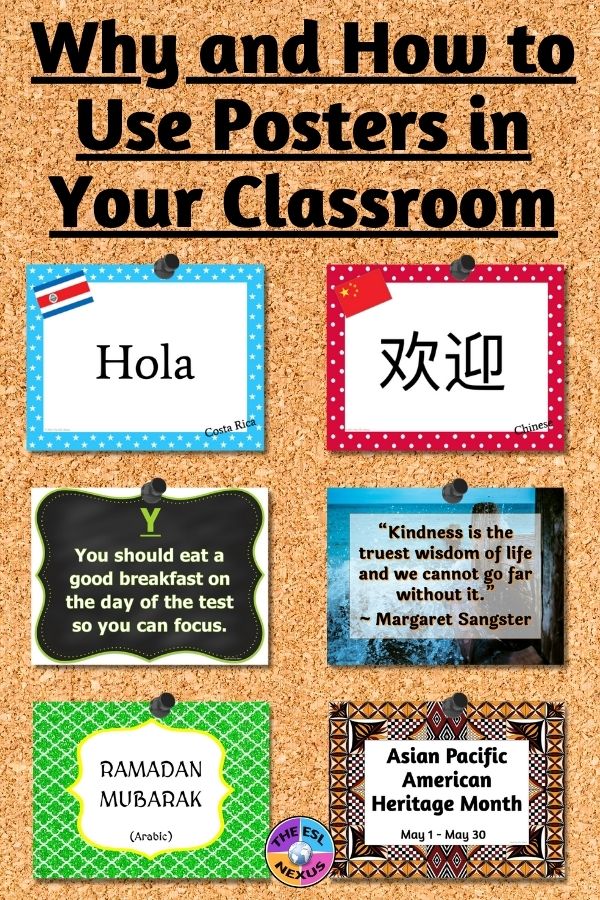 |
| Map of India; source: The CIA World Factbook |
Then I was told to teach Social Studies to some of my ELLs and, wouldn’t you know, the 7th and 8th grade curricula included units about Hinduism and ancient Indian history. So I read up on Indian culture and history. I always made a point of mentioning when major holidays in various religions occurred because most of my ELLs weren’t exposed to them and I thought they should know, especially if the holidays were connected to the material I was teaching my students.
Veterans Day in the U.S. is celebrated on November 11th and I know there will be celebrations of various kinds in schools this week to honor American soldiers. But this year, November 11th is also the start of Diwali, the Hindu Festival of Lights. Also called Divali and Deepavali, it is perhaps the most important Indian holiday.
 |
| Information about Diwali; source: The ESL Nexus |
I was also very fortunate to have the opportunity to travel to India several years ago through the Fulbright-Hays Seminars Abroad program, sponsored by the U.S Department of Education. This program offers small groups of American educators the chance to travel to a non-Western country for 4-6 weeks in the summer to learn about that country. The aim is for the educators to incorporate what they learned during their trip into their future lessons. My trip to India was wonderful and I encourage teachers to apply. In 2016, there will be trips to Peru for K – 8 educators and India for 9 – 12 educators and to Senegal for teachers at community and four-year colleges. You can find more information HERE. The deadline to apply for next summer’s programs is early December.
Good luck and Happy Diwali!




